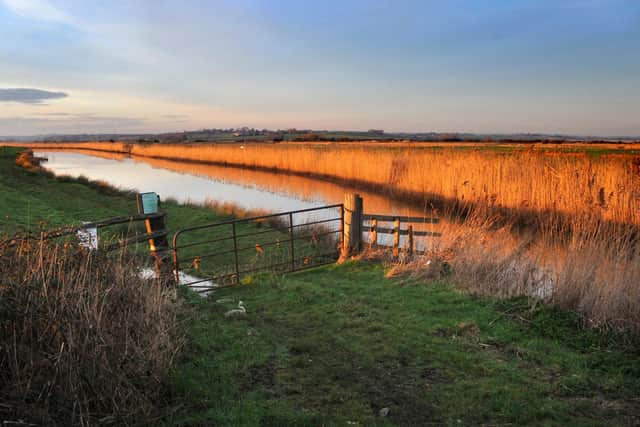The international significance of Pevensey Levels
and live on Freeview channel 276
Most people in Sussex don’t realise the importance of the Pevensey Levels wetland nature reserve.
I certainly hadn’t realised before watching a short presentation by local environmentalist Evan Jones.
Advertisement
Hide AdAdvertisement
Hide AdThe Pevensey Levels is an internationally recognised conservation site: a UNESCO RAMSAR site.


Not even the Ashdown Forest, the other large Wealden nature reserve, has such an important designation.
In fact, the RAMSAR and the World Heritage Conventions have been united, which shows the significance of the Pevensey Levels.
Once this is realised, so is the insanity of current efforts to build over the green space around this protected wetland area.
Advertisement
Hide AdAdvertisement
Hide AdThe reserve has very rare species of flora and fauna – one of the last pockets to be found in England.
The water drainage, noise, lighting, car pollution and predatory pets from the several thousand new houses will have a significant impact on this internationally important nature reserve.
Yet, Wealden District Council has not assessed the likely cumulative impact.
On the contrary, it appears to have to done its best to avoid undertaking any such study.
Advertisement
Hide AdAdvertisement
Hide AdThe Government’s apparent policy of “build and ask questions later” is madness for other reasons too.
Rather than see through a national strategy for large scale urban housing, properly managed through its life cycle, and which other countries do successfully – Singapore, Japan, Korea, for example – the Government is using an American zonal allocation system to instead force district councils to meet allocated targets.
Why have we been lumbered with an American zonal system?
Apparently because addressing what homes the country needs has been abandoned in favour of what a handful of huge developers want.
The north of country is demanding a levelling-up of national development, yet much of the allocated housing share remains in the south and in green spaces.
Advertisement
Hide AdAdvertisement
Hide AdThe type of houses proposed, too, are not those that are most needed, i.e. affordable homes as opposed to larger luxury builds. It is not lost to anyone looking into the issue that the developers make far more profit on one larger home in a southern green area than many affordable homes on a northern urban brownfield site.
It can come as no surprise that property developers contributed a nearly a quarter of the 47.5 million pounds in donations to the Tory party coffers over 2019-20, up from 7.9 per cent two years before (The Independent, 26 June 2020).
Another investigation by OpenDemocracy.net reported how property tycoons are amongst the “Leaders Group” where £50,000 per annum buys quarterly access to government.
This group has given more than £130 million to the Conservatives since 2010.
Advertisement
Hide AdAdvertisement
Hide AdMeanwhile, large housing developments are being built in Wealden without sufficient infrastructure, such as schools, medical facilities, sewage, or even road access.
Sewage leaks and drainage overflows into the Pevensey Levels water catchment are ongoing.
I’m not arguing for more houses to be built around the Ashdown Forest; instead, a national urban development programme designed for success is required. And young people frequently want to live in urban areas, where jobs and entertainment are to be found
If it were the last pocket of the Amazon rainforest being destroyed by developers, would we all stand up and register our protest?
Of course, we would.
And so too must we protest the encroachment on one of our own last wetlands, an area that protects several endangered English species, and a final remaining pocket of our natural heritage.